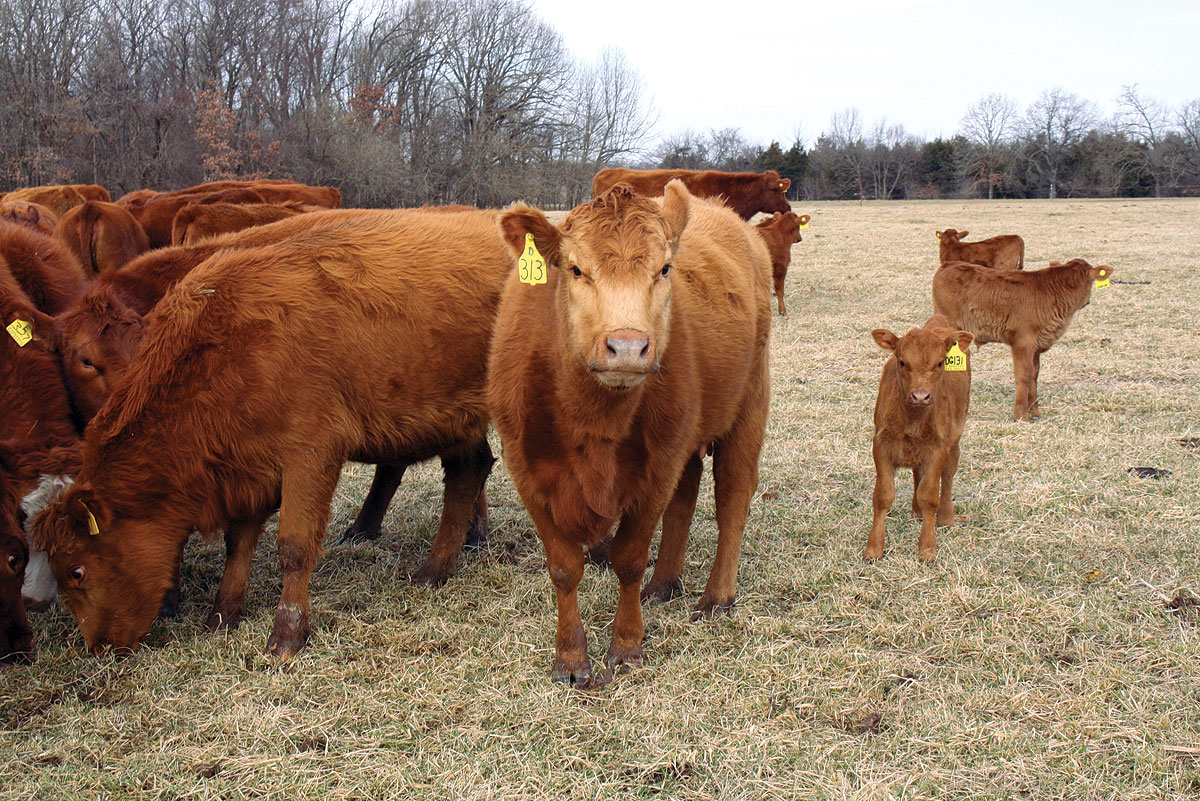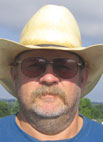
Double V Ranch turns to Red Angus to produce high-quality heifers and cows
Victor Miller likes good cows. He likes cows that hold their condition well, raise a good calf, and that “look like cows.”
Thanks to the influence of Red Angus, Victor feels he has the cows, and heifers, he was looking for.
As Victor began to build his herd, he used a variety of bulls, but it was the Red Angus that proved to work best in his operation and for his goals.
“We got our first (Red Angus) bulls about 20 years ago and then went with some Charolais and some Gelbvieh, but I wanted to retain my own heifers, so I went back to Red Angus,” he said. “For the last five years, we’ve been exclusively using Red Angus bulls.
“I really like the mothers. About half of my herd used to be black cows, and the black cows were in the ponds and in the shade when the red cows were out eating, so I went back to Red Angus. We still have some black cows, maybe 30. If it’s a good heifer, I’ll keep it, black or not.”
Victor utilizes an AI program for his 300-head cowherd, followed by Red Angus clean up bulls. About 80 percent of his herd is bred through AI, with half calving in the fall and the other half in the spring.
“It really helps us group our calving time,” he explained. “We had 75 percent of our calves this season come in 30 days. We’re tightening that up and it helps in marketing our cattle. The bulls I use, even my clean up bulls, are in the top 25 percent of the Red Angus breed. I’m trying to use bulls that have the same EPDs that my AI bulls do, so I’m seeing pretty good results.”
Top heifers from each calving season, about 80 annually, are retained and placed into the breeding program at 14 months of age.
“Thirty days before breeding, we’ll get the vet out to score and measure everything,” Victor explained. “They will qualify for Show-Me-Select heifers. We don’t worry about calving heifers because they are able to calve on their own. We have our cowherd pretty much where we want it, so we’re going to start selling some heifers. We have consigned for the Show Me Reds (sale) in Springfield and I’m excited to see how they go. We use the Red Navigator test. It’s not an actual EPD but ranks them where they are in the breed. We’re a little above average in the ranking with our heifers.”
Focusing on the production of high-quality heifers is Victor’s priority at this time.
“I want to keep in the heifer market,” he said. “I’m not saying I won’t go to bulls, but right now we’re going to concentrate on quality heifers. I like females that look like cows. She has to be deep bodied, have some length and I want something that looks like a mother. I like to keep heifers I think are going to have good udders. It’s amazing how these little teacup udders can wean such big calves. I have heifers that are AI sired, having AI calves and you can see it; the performance is there.”
Cows are not offered grain, but do receive mineral supplements and hay when needed. Because the diet of his herd is forage based, Victor broadcasts clover and has no-till drilled some lower-quality pastures with Cold Grazer Rye.
“We also use poultry litter and soil test to try and keep everything balanced. We bale baleage and I think that’s something that’s important and helps us out,” Victor said.
Pasture is stockpiled for calving and Victor has fed little hay thus far this winter, while his cows have maintained good condition.
“The calves are growing like weeds,” Victor said. “The bulls we use are Herd Builders and GridMaster and are in the top 5 percent; the weaning weights and everything is right there… I want to maintain my cow weight around 1,200 pounds, so I’m not using a terminal bull to get all the pounds I can get; I try to keep a balance. Watching my bulls’ EPDs, I want that maintenance to be at zero or minus. I want to have a cow that can maintain herself, raise a good calf and not get too big.”
Since making the switch to Red Angus, Victor said he has seen tremendous growth in his calf crops. Calves are offered a 14 percent creep feed a few weeks prior to weaning, then are switched to a ration starter a couple of weeks later.
“We want them to know where the feed is at and when we wean, they just take off,” Victor said. “Last fall, we weaned calves in the upper 500s. Twenty-one days later, we weighed them again and they had gained over 4 pounds a day. I feel we’re on the right track with our calves.”
In addition to genetics, Victor credits low-stress cattle handling methods of Bud Williams for higher AI rates, greater gains in calves and overall health.
“Working cows, we don’t have any hotshots, no paddles, no sticks, no hollering; it’s all very quiet,” Victor said. “When we bring in the cows to AI, they are just like dairy cows and turn the corner. We don’t dread working cows anymore. It’s a family deal and everyone helps, and it’s not a stressful time.”
Accurate and detailed records are critical for Victor. Knowing the history of an animal at a glance allows him to be a better herd manager.
When a cow calves, the date, how much the calf weighed, the sex, calving ease and the BCS of the cow are recorded. At weaning, the calf’s weight is again recorded. Ear tags are also a quick reference for the Millers, thanks to a series of letters and numbers.
The Double V Ranch, named for Victor and his wife Veronica, is putting its genetics to a new test. The Millers recently sent a group of about 66 calves to a Kansas feedlot, and have retained ownership in those animals.
“I’m looking forward to seeing the data on those calves,” Victor said. “We sent them about 90 days after weaning with an average weight of about 820 pounds.”
Victor’s herd is housed on five farms, requiring a 50-mile round trip to visit each location. Victor also raises contract turkeys for Cargill, so it’s impossible for him to check cattle multiple times a day, which is why a stringent health program is critical for overall herd health.
“Vaccinations are very important; as long as you are fence-to-fence with a neighbor, you can get anything,” Victor said.
Victor is pleased with his current herd numbers, which will allow him to maintain his focus on his genetics and heifer development.
“I really don’t think I want to get much bigger.”






